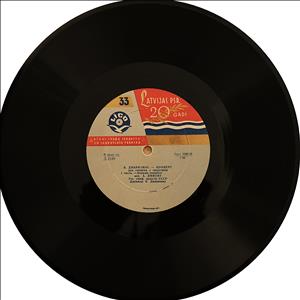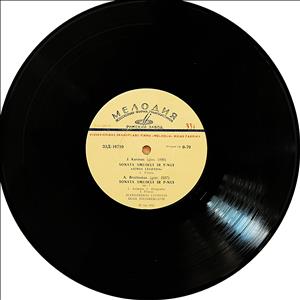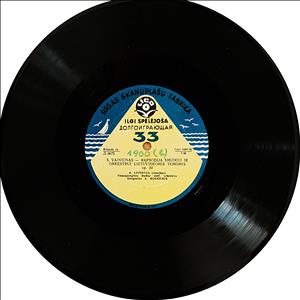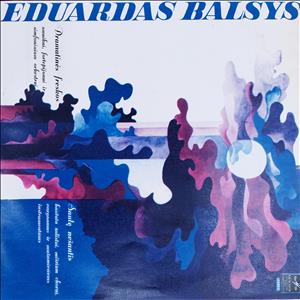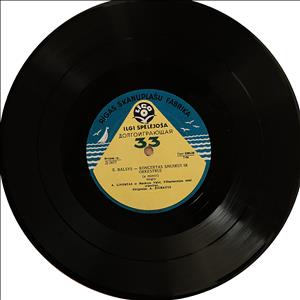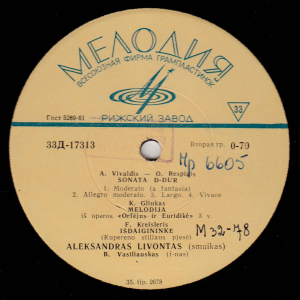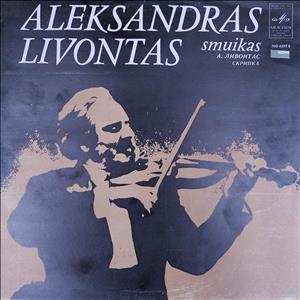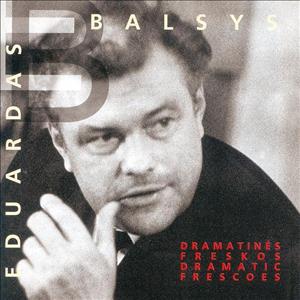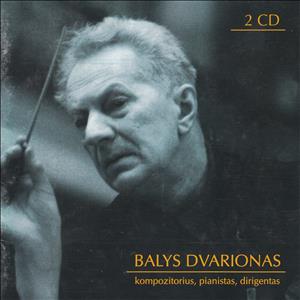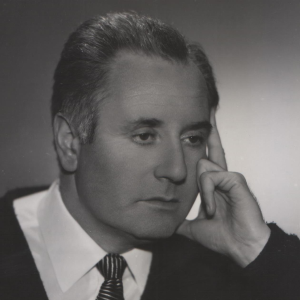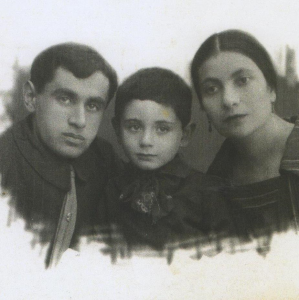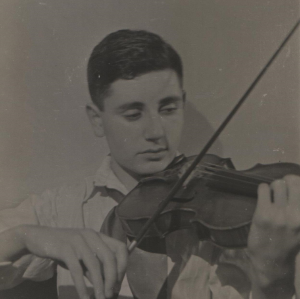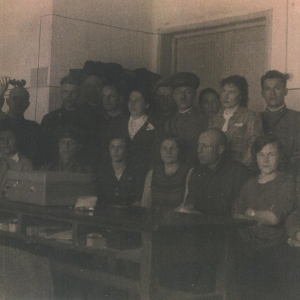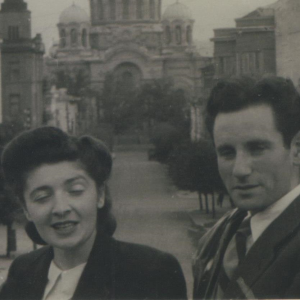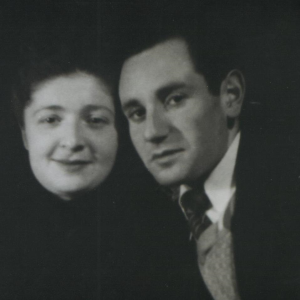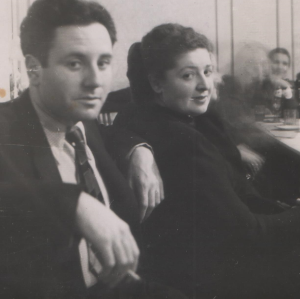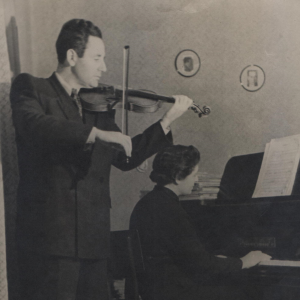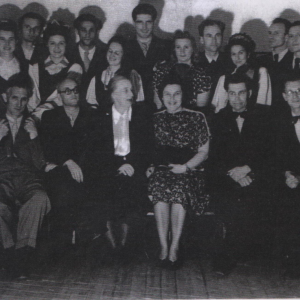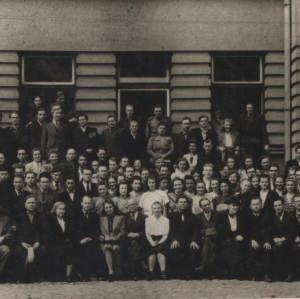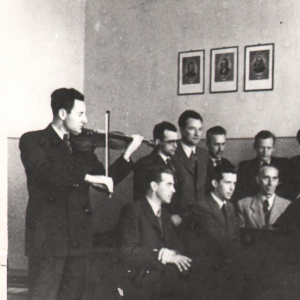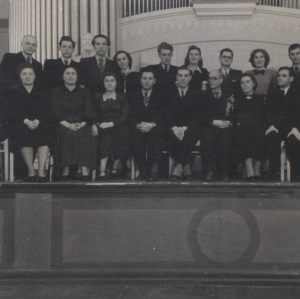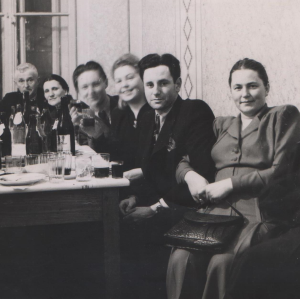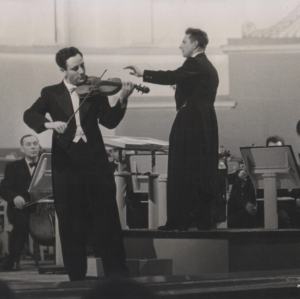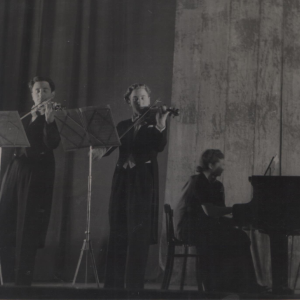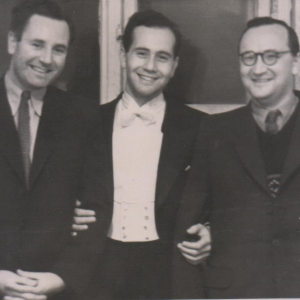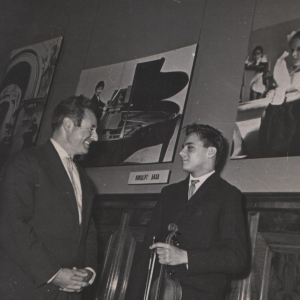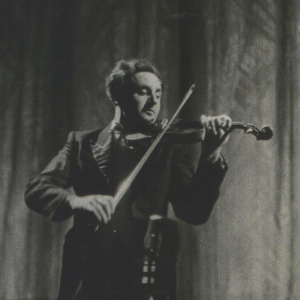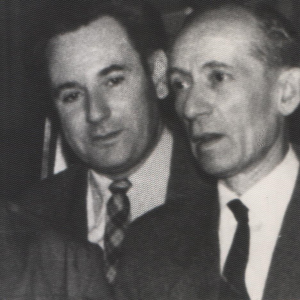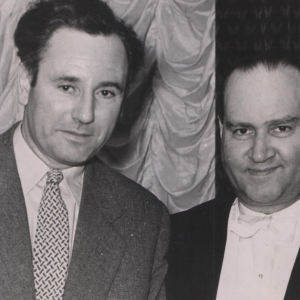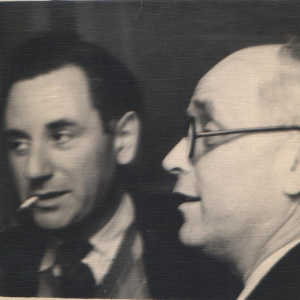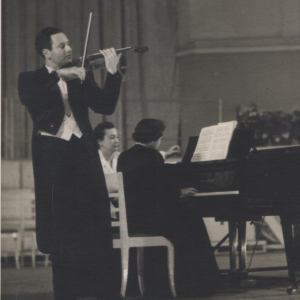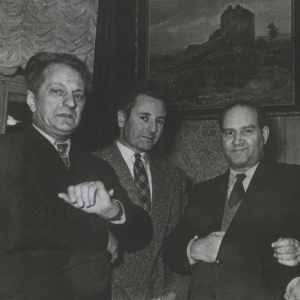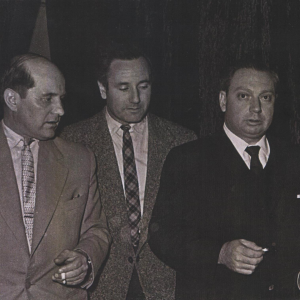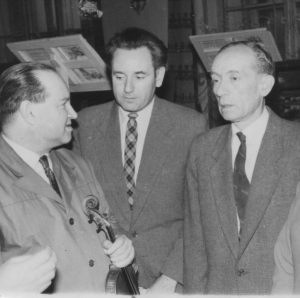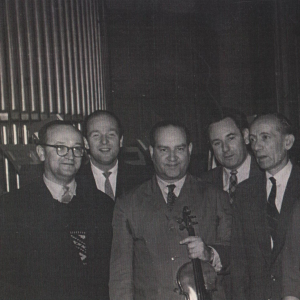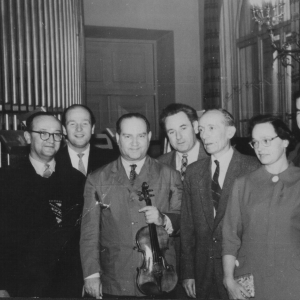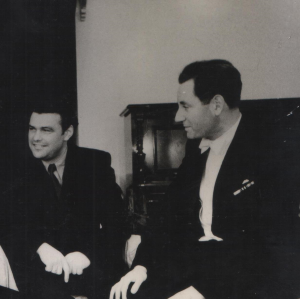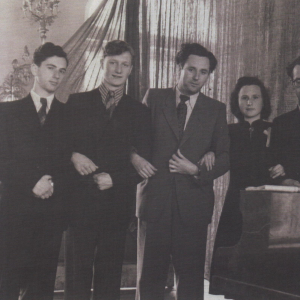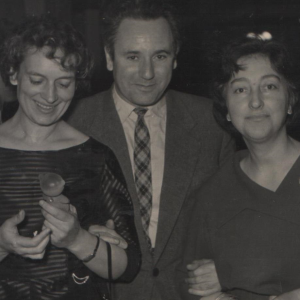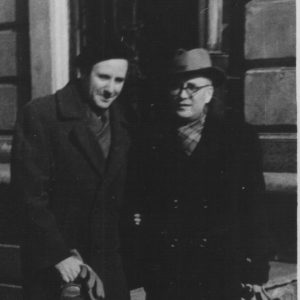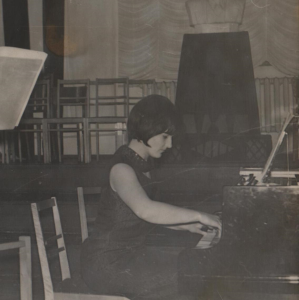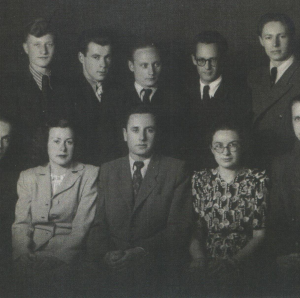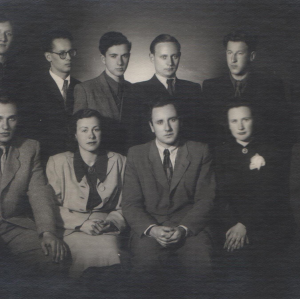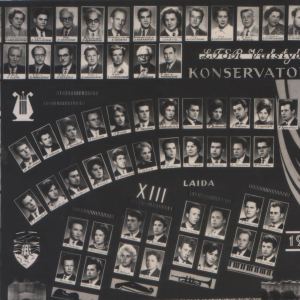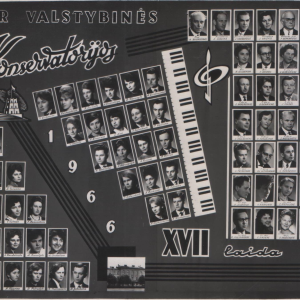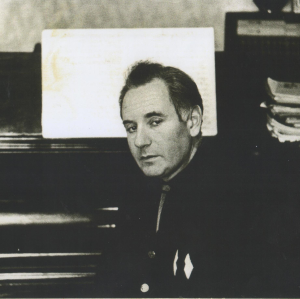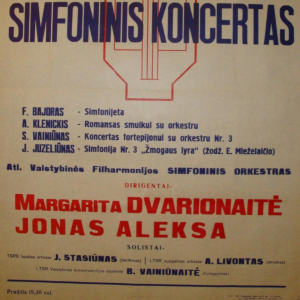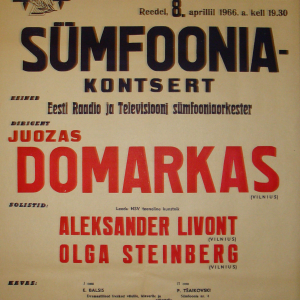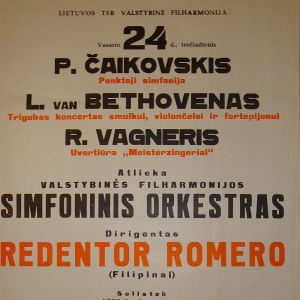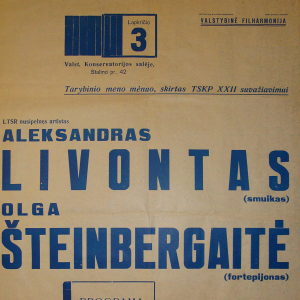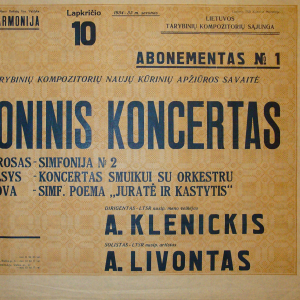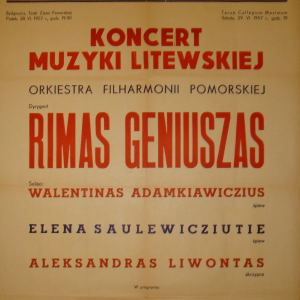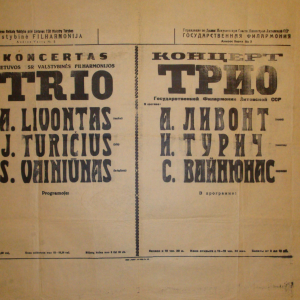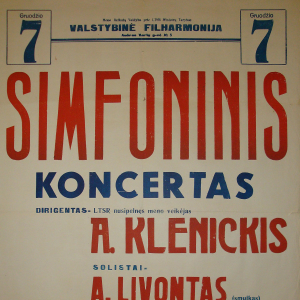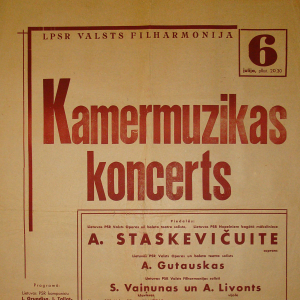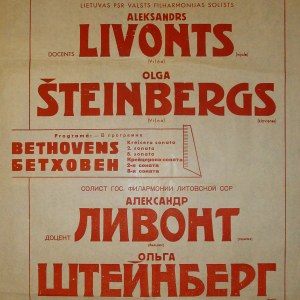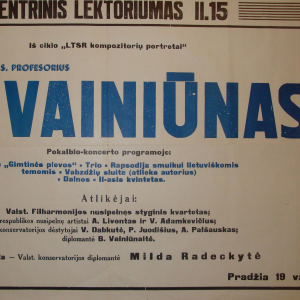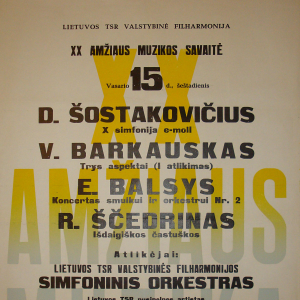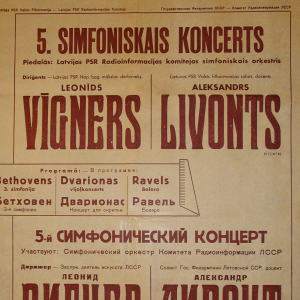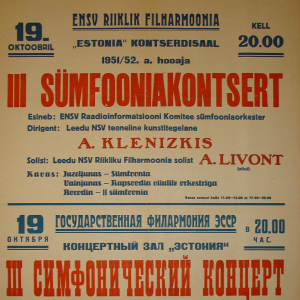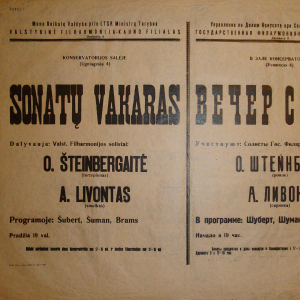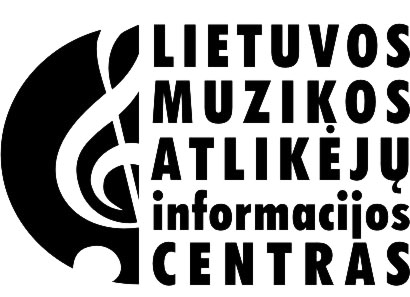
Aleksandras Livontas (1920-1974)

Aleksandras Livontas (1920-11-20 Kharkov, Ukraine – 1974-11-12 Vilnius) – a Lithuanian violinist, pedagogue, cultural figure and publicist, one of the foremost violinists who lived and worked in Lithuania. He has become an inseparable part of Lithuanian culture. As a performer and pedagogue he influenced many a Lithuanian performer generation and greatly contributed to the development of the Lithuanian violin school. His evocative, emotional, virtuoso interpretations and artistry left an indelible mark in the history of the Lithuanian music performance culture.
Beginning
He was born on November 20, 1920 in Kharkov (the Ukraine) into a family of a radio factory operator. Parents consented to his early violin studies. In 1930, the family moved to Odessa where he entered the School of Stolyarsky, which at the time was considered to be of high standard educational institution in culturally rich Odessa. Livontas started performing at a young age, played as a duo with his schoolmate Olga Šteinberg, who later became his wife.
Studies
In 1937, he was admitted to the Odessa Conservatory, where he furthered his education under prof. Pyotr Stolyarsky, a teacher of such world stars as David Oistrakh and Nathan Milstein. Due to the outbreak of WWII, Livontas terminated his studies in 1941. He served in the armed forces, the Volkhov Front, but having suffered the 2nd degree frostbite (fingers and toes) he was demobilised. In 1942, he entered the Moscow Conservatory, where he studied with D. Tsyganov and D. Oistrakh. For his diligence he was awarded the Lunacharsky scholarship and (in 1943) the right to give a recital at the Concert Hall of the Moscow Conservatory. He graduated from the Moscow Conservatory in 1944, and, invited by Juozas Baltrušaitis, the head of the Lithuanian Ministry of Culture, Livontas joined a group of musicians and moved to Kaunas.
Creative years in Lithuania
After settling in Lithuania, Livontas soon became one the most active participants of Lithuanian music scene. Moreover, he greatly contributed to the development of Lithuanian music culture and the fostering of young professionals. In 1945–1948, he served as the first violin of the Lithuanian Opera and Ballet Theatre and the Philharmonic soloist. In 1945 and 1947, he taught at the Kaunas Conservatoire, and in 1946 – at the then Vilnius Conservatoire. In 1948, he finally settled in Vilnius and dedicated himself to teaching and concert career. He performed as a soloist, a member of the State Trio (with B. Dvarionas and cellists I. Turinčius, P. Berkavičius), as well as in a duo with his wife pianist Olga Šteinberg.
Lithuanian music occupied an important place in Livontas’ creative career. He was a champion of Lithuanian music, collaborated with composers Balys Dvarionas, Stasys Vainiūnas, Eduardas Balsys, Antanas Račiūnas, Vytautas Barkauskas and others; he was their inspirer for and performer of compositions for violin. Livontas’ repertoire amounted to more than 80 works by Lithuanian composers. An ardent enthusiast, inspirer and promoter of Lithuanian music, he incorporated the best Lithuanian opuses into his repertoire. Owing to his dedication, the Lithuanian music was performed all over the Soviet Union, and his performance of B. Dvarionas’ Violin Concerto earned the opus the State Prize. Livontas pursued especially close ties with E. Balsys, their creative friendship moulded the creative features of both musicians and substantially enriched the Lithuanian violin repertoire. As a result, Balsys’ 2nd Violin Concerto Dramatic Frescoes was born. Livontas was the first performer and editor of the violin parts of Balsys’ works for violin.
“The entire Lithuanian violin music is my heart, my happiness, my life, my sorrow and my tears. Everything in it is dear to me. And I always have the feeling, that a new composition, which I lay my hands on, is the best of all I have ever performed”, said Livontas. (“Pergalė”, 1970 No.11, p.150)
In addition to Lithuanian works his repertoire included the core of violin literature. He performed in Lithuania, Latvia, Estonia and Poland, collaborated with various orchestras in Lithuania, Latvia, the Ukraine, Belarus and Russia. His playing was regularly broadcast on Radio and TV. He gave a lot of concerts as a duo with his wife Olga Šteinberg. Their duo’s repertoire included majority of the then Lithuanian music for violin and piano. Many Lithuanian composers dedicated their works to the duo.
Since 1984 to the end of his life Livontas taught at the Lithuanian Conservatoire (presently the Lithuanian Academy of music and theatre) and the Vilnius Ten-Year Music School (presently the National M.K. Čiurlionis School of Art). He was a talented and strict teacher. Livontas educated quite a number of celebrated violinists: Jonas Urba, Kęstutis Alfonsas Ivaškevičius, Saulius Sondeckis, Feliksas Bajoras, Algis Gricius, Dalia Pomerancaitė, Raimundas Katilius, Beata Vasiliauskaitė, Edita Vasiliauskaitė, Paulius Juodišius, etc. Many of them chose pedagogical careers and educated many a talented violinist. In 1955, Livontas was granted with an assistant professor pedagogical title.
In 1970, he was honoured with the title of the People’s Artist of the LSSR.
Livontas died at the age 54 on November 12, 1974 in Vilnius. After a performance of Balsys’ Second Violin Concerto with Ulyanovsk Symphony Orchestra his heart stopped in the dressing room.
He is buried in the Antakalnis Cemetery.
Written by Aldona Juodelienė
Lithuanian Composers
E. Balsys
Concerto for violin and orchestra No. 1
Concerto for violin and orchestra No. 2
Dramatic frescoes for violin, piano and symphony orchestra
Suite for violin and piano from Ballet „Eglė Queen of the Grass-snakes“
A. Bražinskas
Sonata for violin and piano, op. 7
B. Dvarionas
Concerto for violin and orchestra in B minor
Two harmonized Lithuanian folk songs
Four Songs for voice and piano
J. Gruodis
Sonata for violin
J. Karosas
Concerto for violin
Lithuanian Dances Suite for violin and piano
"The Sea Legend", sonata for violin and piano
V. Klova
Concerto for violin
10 Pieces for violin and piano
G. Kuprevičius
Sonatina in Classical Style for violin and piano
J. Pakalnis
Adagio from Ballet „Fiancee“
V. Paltanavičius
Sonata for violin and piano
A. Račiūnas
Introduction and burlesque for violin solo
Sonatina violin and piano
Sonata-fantasy for violin solo
Little Triptych
V. Barkauskas
Partita for violin solo
St. Vainiūnas
Concerto for violin and orchestra
Trio for violin, cello and piano, op. 12
Rhapsody, op. 30: for violin and orchestra
R. Žigaitis
Sonatina
Foreign Composers
I. Arenski
Trio in D minor
L. van Beethoven
Sonatas for violin and piano
C. W. Gluck
Melody (from opera „ Orfeo ed Euridice “)
F. Couperin
„Prankster“
F. Mendelssohn
Concerto for violin and orchestra in D minor
P. I. Tchaikovsky
Trio in A minor, op. 50 In memory of a great artist
A. Vivaldi
Concerto „Spring“ from cycle „The Four Seasons“
Concerto for violin and orchestra in A minor
A. Vivaldi–O. Respighi
Sonata in D major for violin and piano
“On stage Livontas is an artist in its true sense. Even more – he is an orator, a tribune. His aim is to conquer the soul and attention of the audience. Livontas aspires to reach the audience with his musical communication. Everything should be convincing, even effective if needed. Indeed, it is an artistic quality that projects Livontas’ individuality best, and that’s what links him to the tradition of violin virtuosos. The most important is that he endeavours to enthuse the listener by his artistry, his playing reminds a naked heart beating in the presence of the audience”
Katkus, D. Menininko individualybė. “Pergalė”, 1970 No.11, p. 151
“In life and his professional career Livontas did not obey the mediocre personalities surrounding him, his art exhibited a true and earnest human passion. He brought into the Lithuanian music history a gigantic part as a first performer, editor and in many cases initiator of the Lithuanian opuses. I am convinced, that without Livontas the violin repertoire by Lithuanian composers would have been purer in terms of both quantity and quality.”
